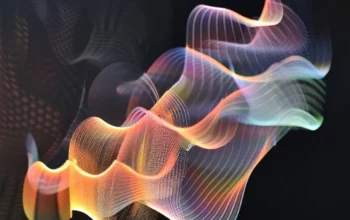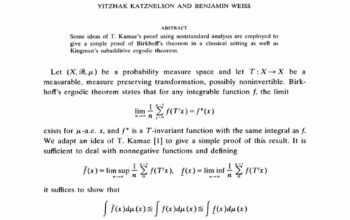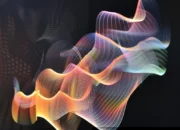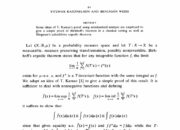The realm of time, ever elusive and enigmatic, presents itself as a continuum that governs the motions of both celestial and subatomic entities. While humanity has long sought to measure time with increasing precision, the advent of new technologies has propelled us into an era where measuring subdivisions of time has become a tangible reality. Among these subdivisions lies a remarkable metric—the yoctosecond. A yoctosecond, a billionth of a billionth of a second, is equivalent to (10^{-24}) seconds. To place this into perspective, consider that one yoctosecond constitutes merely a fraction of a proton’s lifetime, a statistic that beckons us to re-evaluate our understanding of temporal measurement and its implications across various fields of science.
The notion of the yoctosecond challenges our intuitions regarding time. Human perception orbits around much coarser measures; we are accustomed to seconds, minutes, and hours. However, as we delve into the realms of quantum mechanics and particle physics, the practical importance of such diminutive time frames emerges with startling clarity. In fact, recent advancements in experimental physics allow us to measure phenomena that occur on a scale that was previously inconceivable. Herein lies the promise of the yoctosecond—it serves as a catalyst for a shift in our comprehension of both time and the fundamental forces that shape our universe.
To comprehend the significance of a yoctosecond, one must first explore the foundations of time measurement. Historical paradigms have relied largely on macroscopic phenomena. From sundials to atomic clocks, timekeeping has evolved significantly; yet the quintessence of temporal measurement is, and always has been, contingent upon the motion of matter. The invention of the laser has revolutionized this aspect. Lasers provide a coherent source of light that has enabled scientists to observe and manipulate tiny particles with remarkable acuity. With innovations such as the optical clock, time can now be measured with extraordinary precision, approaching phenomenally tiny intervals such as the yoctosecond.
The practical applications of this newly acquired precision are manifold. In the realm of high-energy physics, for example, interactions at particle colliders can occur in fractions of a yoctosecond. Observing these interactions yields insights into fundamental constituents of matter and the forces that govern them. One such interaction is the decay of particles, which often happens seemingly instantaneously, yet upon close examination, can unveil intricate processes that defy conventional understanding. In liaisons with multi-dimensional quantum states and the transient nature of particles, the yoctosecond serves as a vital instrument for deciphering the complexities of the subatomic world.
Moreover, the intersection of time measurement with quantum computing is noteworthy. Quantum entanglement, a phenomenon wherein pairs of particles become interlinked in such a way that the state of one instantaneously influences the state of another, regardless of distance, poses challenges that require an astute understanding of quantum mechanics and, indeed, temporal measurement. The yoctosecond emerges as a crucial factor in the race toward ultra-fast computing capabilities. The fleeting transactions between qubits manifest in time frames that demand precision on the order of yoctoseconds, parallelly offering promising avenues for harnessing data processing methods that operate at unprecedented speeds.
The implications of measuring time at the yoctosecond level extend into the very fabric of reality as we comprehend it. With each advancement, we inch closer to the overarching questions that govern existence: What is time? How does it influence the cosmos? The measurement of time at such infinitesimal scales compels us to rethink linearity and causality. Traditional macroscopic interpretations of time suggest a consistent progression from the past, through the present, and into the future. Yet as we pry open the doors of quantum reality, the linear perspective blurs. Events can be concurrent or exist within superposition; the kaleidoscopic nature of reality becomes starkly evident when examined through the lens of quantum mechanics.
As we stand on the precipice of a deeper understanding, curiosity burgeons. Each yoctosecond exposed reveals a layer beneath the surface of reality that prompts further inquiry. The once speculated realms of theoretical physics transform into arenas wide open for discovery, challenging longstanding doctrines and encouraging interdisciplinary collaboration. In areas such as astrophysics, where black holes and expansive cosmic phenomena reside, the implications of yoctosecond measurements resonate sharply. Theoretical constructs, such as the nature of black hole entropy or the dynamics surrounding events immediately following the Big Bang, beckon researchers to investigate with newfound vigor.
On a broader philosophical front, the exploration of time in its minutest forms invokes contemplation regarding existence itself. What happens in a yoctosecond can resonate throughout the universe, hinting at connections that span enormous scales and instants. The implications extend beyond pure science into ethics, metaphysics, and the nature of consciousness—an inquiry into how life perceives time, and how our fleeting moments might connect with those occurring on a quantum scale.
In conclusion, the yoctosecond illuminates the path toward uncharted territories in both time measurement and our comprehension of the universe. Embracing this infinitesimal increment of time not only enhances the scientific endeavor but also piques an insatiable curiosity within the human spirit. As we venture deeper into this exploration, we stand poised for a renaissance in our understanding of time, space, and matter, forever altering the landscape of both theoretical and experimental physics. The smallest slice of time, the yoctosecond, invites us to ponder the vastness of existence tucked within its fleeting embrace.











